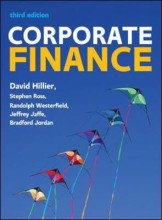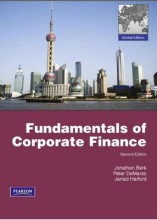Internal Control and Fraud
18 important questions on Internal Control and Fraud
What is the Sarbanes-Oxley law?
What are the 2 most common types of fraud in business?
2. Fraudulent financial reporting - company managers make false and misleading entries in the book, to make the company seem financially healthier than it actually is
What is cooking the books?
- Higher grades + faster learning
- Never study anything twice
- 100% sure, 100% understanding
What are the 3 elements of the fraud triangle?
2. Opportunity - weak internal control
3. Rationalisation - self-justification
What is the fraud triangle?
What are the 5 elements of which internal control in a company exists?
2. Risk assessment - which processes are prone to fraudulence
3. Information systems - the flow of financial information and where fraud could be committed
4. Control procedures - protocols used to avoid internal fraud
5. Monitoring controls - not a single person can process a transaction without it being checked by another person
What are the 5 control procedures a company can apply?
2. Comparisons and compliance monitoring
3. Adequate records
4. Limited access
5. Proper approvals
What is a budget?
What is a cash budget?
What is the difference between an internal and external audit?
What is exception reporting?
What is the suspense account?
What are the 2 sides of of the bank reconciliation suspense account?
2. Book balance - 'bank account' on the balance sheet
What are the uses of the bank balance?
2. Outstanding cheques - cheques you have recorded, but the bank has not paid yet. Subtract from bank balance
3. Bank errors - depending on error add/subtract correct value
What are the 4 aspects of the corporate governance-policy?
2. Control - control policy on management
3. Accountability - is the policy legal or not, do they follow the rules - accountants job
4. Supervision - check from neutral perspective
What are the 2 dominant corporate governance-policy structures?
2. Network/Rhineland model
What are the characteristics of the market corporate governance-policy?
2. Market-oriented policy
3. Lots of different small investors
4. One-tier governance (board and supervisory board are seen as one)
5. Often confrontations between board members and managers
6. Focus on short term strategy
What are the characteristics of the Network corporate governance-policy model?
2. Stakeholder-oriented policy
3. Few big investors such as banks
4. Two-tier governance (board and supervisory board are different bodies)
5. Conformity between board members and managers
6. Focus on long-term strategy
The question on the page originate from the summary of the following study material:
- A unique study and practice tool
- Never study anything twice again
- Get the grades you hope for
- 100% sure, 100% understanding































